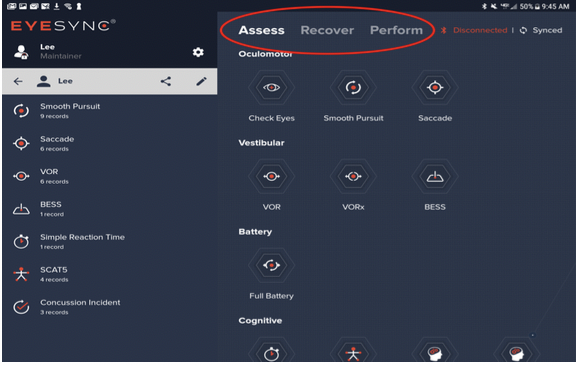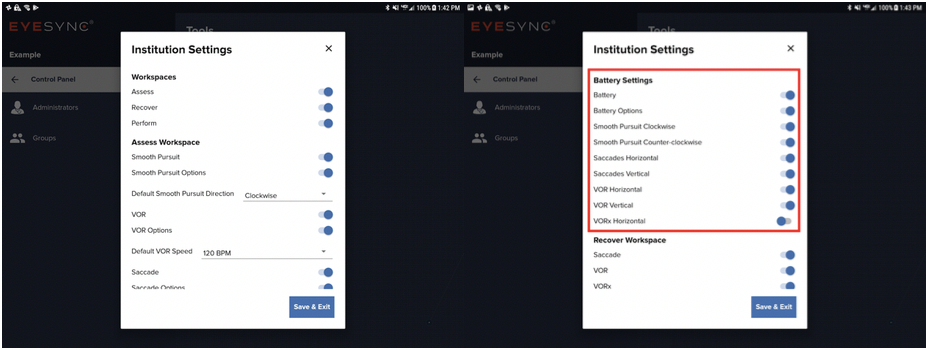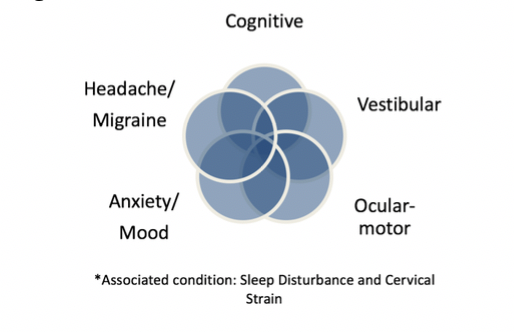Blog: A Year in Review and a Glimpse Into the Future
The end of a calendar year allows us to reflect upon events, accomplishments and progress made over the last 365 days. It also allows us to look to the future, set goals and envision what the next 365 days will have in store. Often times we do this personally – although only 25% of New Years Resolutions last more than 30 days – and we always see businesses and companies setting goals and plans for the upcoming year. SyncThink’s 2019 accomplishments are worthy of reflection and celebration, while also looking ahead to 2020 and getting a glimpse at what we have in store (no New Years Resolution included).
Let’s start this 2019 review with the reason why SyncThink exists, our product, EYE-SYNC! The past year came with several product enhancements to help our users have a better experience and an easier workflow. Many of these product improvements came as a result of feedback from our users. Their clinical insight and guidance help shape our company’s vision and product roadmap. In 2019, we had two major software updates. The first update occurred in the spring. It provided users with new workspaces named Assess, Recover, and Perform workspaces (Figure 1) along with performance results to track improvement in the Perform feature. Those are just two highlights, this update provided us with many workflow and ease of use elements as well.

Figure 1. Assess, Recover and Perform workspaces in the EYE-SYNC platform.
The fall 2019 update is what we are currently operating on. The most notable change in this update is the addition of customization settings. These settings allow users to select what they want to populate on the tablet (Figure 2). Each clinician has different needs for their respective processes, so customization options are crucial. The ‘full battery’ customization allows users to choose which assessments are included or not in the ‘full battery’ assessment (Figure 3). This can help with saving time and who would be opposed to a predetermined list chosen by you? Not us! This version also comes with pre and post assessment symptom inventory to track the changes during assessments, isolated graded symptom checklist, full CAP/CARE compliance, new plot visuals, many new cognitive assessments and much more!

Figure 2 & 3. Customization options of entire platform and of full battery settings.
Last note on the product side; in January of 2019 we were lucky enough to attend CES and release some big news. We announced our partnership with MagicLeap, the makers of an augmented reality and spatial computing technology. Stay tuned to see what we have in store on this awesome platform!
We would be nowhere without our customers. In 2019 we doubled our customer base and tripled our usage! This past year we have diversified our customer setting even more including new hospitals (Houston Methodist, Wentworth Douglass), sports teams (Washington Wizards, Tulane Institute of Sports Medicine), concussion clinics (Comprehensive Concussion Care), neurology clinics (Restoration Neurology), and more. We welcomed our first high school, Harvard Westlake, to not only be used in athletics, but academics as well. In 2019 our first league wide adoption occurred. We partnered with the Premier Lacrosse League (PLL) who had a phenomenal inaugural year. The PLL, an innovative and motivated league, prioritizes the health and safety of its players. With these two values in mind, partnering with the PLL was a no brainer (no pun intended).
In the first half of 2019 we were able to solidify our medical advisory board. This is of huge importance to us. Having dedicated, respected healthcare professionals help represent our vision and product is essential to success in this space. Each of our advisors brings a unique, specialized background. Our medical advisory board includes:
Jeffery Kutcher MD, FAAN (Neurology)
Kristen Steenerson MD (ENT Neurology/Vestibular Disorders)
Gordon Matheson MD, PhD (Primary Care/Sports Medicine)
Lenore Herget PT, DPT, SCS, Med, CSCS (Physical Therapy/Neuro Rehabilitation)
Marie Boo DPT, PT, SCS, CSCS (Physical Therapy/Neuro Rehabilitation)
Maya Yutsis PhD, ABPP-CN (Neuropsychology)
Lastly in 2019 was the publication of “Concussion Guidelines Step 2: Evidence for Subtype Classification”. Our founder, Jam Ghajar, played an important role in this study, along with many other influential authors. Although it is relevant for SyncThink, this publication is bigger than us. This systematic review is a defining moment in helping clinicians understand and treat concussions going forward. In the article, the authors provide evidence for each subtype in the first three days of injury. The subtypes include headache/migraine, ocular-motor, cognitive, vestibular, anxiety/mood and the associated conditions, sleep disturbance and cervical strain (Figure 4). Why are the subtypes important? They can allow clinicians to provide timely intervention through targeted treatment based on the subtype(s) the patient is experiencing. Here at SyncThink we believe EYE-SYNC is a tool that can help decipher which subtypes your patient may be experiencing.

Figure 4. Visual showing the 5 concussion subtypes.
Alright, enough looking into the past, let’s look to the future and discuss what our projections for 2020 are going to be. We have a few things on our mind, but also a few things we can’t disclose (so you will have to keep checking in with us). Here are some items we are excited to project for 2020:
- Advancing our regulatory approvals. In 2019 the FDA awarded EYE-SYNC the Breakthrough Designation to Aid in the Assessment of Concussion. This year we have been working toward providing documentation towards this approval and hope to receive it in 2020. We are also working with the FDA to place explicit recommendations in the application – exciting stuff!
- New Recover and Perform paradigms. We know how important it is to assess impairments, but what happens after that? Recovery and performance! Our focus for 2020 is to help improve the Recover and Perform features. Once an assessment is complete, there will be more ways to help patients improve, rehabilitate, and progress back to their normal state or better.
- New visuals and plots. Being able to provide visuals and metrics that are easily understood and interpreted by our users is critical. We are working to provide more visuals to assist in understanding the assessment and what the patient did, or didn’t do, to make the results more comprehensive. Our hope is that users can select which visuals and plots are most useful for them and their practice – again, customization is key!
- Large partnerships. You will have to keep an eye out on this topic, as we have to keep these close to our chest. But feel free to follow us on social media to keep up with all updates SyncThink related.
I believe looking at the accomplishments of the last 365 days can help us appreciate our successes and can drive us to where we can go as a company in the next 365. Recapping the year also allows us to be grateful for all we have. We are very thankful for our customers in helping drive the product to be the best it can be and value being in the heart of Silicon Valley where innovation runs deep. We are excited for what the new year brings and hope you continue on with us during this journey.



